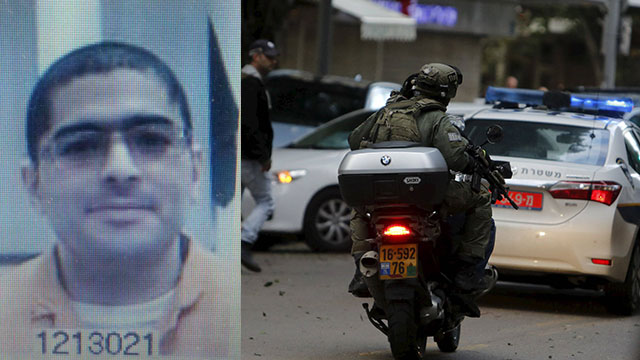
How did Tel Aviv shooter slip away?
Analysis: The police and Shin Bet's performance during the first, critical moments after the Dizengoff Street shooting spree raises quite a few questions.
The incident took place less than 1 kilometer away from the Lev Tel Aviv police station, and the question is how did the terrorist slip away. Another important issue is "closing off" the area. Why didn't the police set up roadblocks and try to close in on the fleeing shooter at real time? As a result, the incident turned from a concrete shooting into a developing event which is still going on as we speak, almost two days later.
From an operational perspective, one can accept the claim that had armed citizens fired back at the shooter at the scene of the attack, the incident would have ended differently.
It's worth focusing on two problematic decisions made on the ground. The first, which was actually led by the Shin Bet, was to avoid publishing the picture of the shooter, Nashat Melhem, until Saturday evening. A former senior official in the General Security Service defined the decision as "delusional."

Professionals are in complete agreement that the pictures should have been spread as soon as possible and everywhere, so that hundreds of thousands of eyes would be exposed to the man and try to locate him. The Shin Bet's thought that his relatives and friends could be reached without knowing he was a suspect points to their detachment.
The public should not have just seen the pictures, but should have also received information in real time, and that was the second problematic decision. The new police chief has introduced a new policy from his days in the Shin Bet - the officers work and the spokespeople speak. That may be right for times of routine, but it's definitely wrong for a national event of such magnitude.
Leaving the media arena in the hands of the district's spokeswoman and sending the district commander to calm the citizens down only three hours later points to a failed policy. What was suitable for the Shin Bet is not suitable for the police.
Eitan Haber once wrote a pivotal article against police officers who gave frequent interviews and called on them to "end the chatter." Then-Police Commissioner Shlomo Aharonishki read, copied and distributed the article among the commanders. Some of them were offended, but commanders kept giving interviews. The police should go on doing that, especially during unusual events. Otherwise, instead of a district commander providing an updated situation report, all the public gets is hysterical descriptions from the wounded.
Police Commissioner Alsheikh is beginning to personally experience the difference between the world of shadows he grew up in until now and the police. He is now becoming exposed and starting to feel the fire. It's too early to start grading his performance after one event, but in order to succeed in his new position he must make much quicker adjustments - especially when it comes to dealing with the public and the media.










